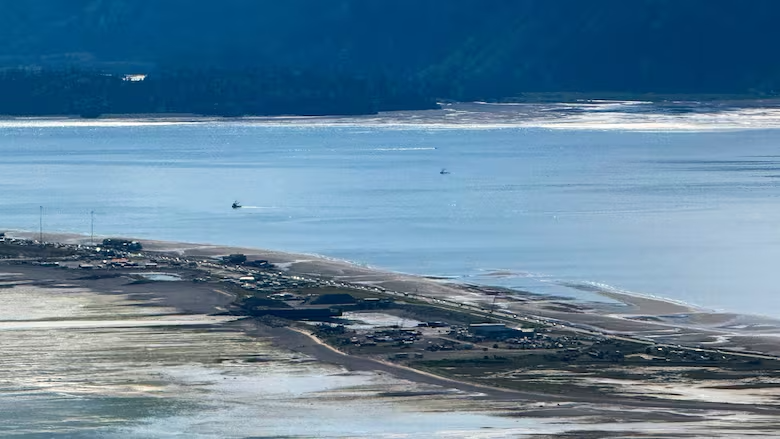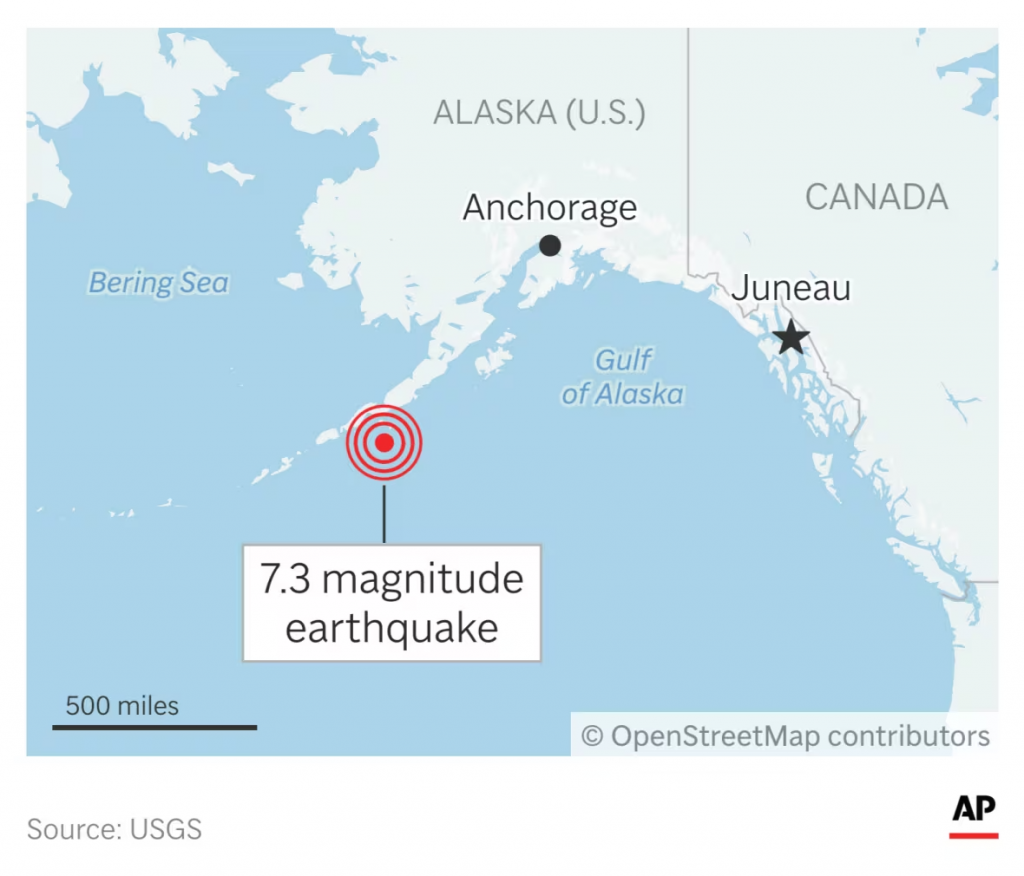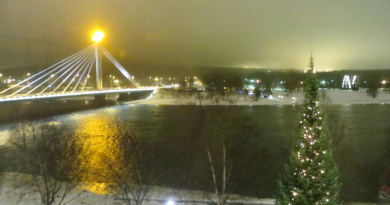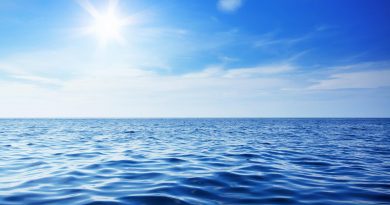Alaska tsunami warning had residents scrambling after 7.3 magnitude earthquake

Communities along a 1,126-kilometre stretch of Alaska’s southern coast ordered residents to higher ground after a powerful offshore earthquake Wednesday, but officials quickly downgraded and then cancelled a tsunami warning for the region. There were no reports of significant damage.
The earthquake, with a preliminary magnitude of 7.3, struck at 12:37 p.m. local time south of Sand Point, a community of about 600 people on Popof Island, in the Aleutian chain, according to the Alaska Earthquake Center.
“We have seen other earthquakes in the area that have not generated significant tsunami waves, but we’re treating it seriously and going through our procedures, making sure communities are notified so they can activate their evacuation procedures,” said Jeremy Zidek, a spokesperson for Alaska’s emergency management division.
The quake was felt as far away as Anchorage, almost 966 kilometres to the northeast.
The National Tsunami Warning Center issued a warning for an area stretching from about 64 kilometres southwest of Homer to Unimak Pass, a distance of about 1,126 kilometres. Among the larger communities in the area was Kodiak, with a population of about 5,200. The warning was downgraded to an advisory about an hour later, and cancelled just before 2:45 p.m.
The highest water level generated by the earthquake in Sand Point was not quite 6.3 centimetres above the tide, the centre said.
“There’s no damage at the airport, doesn’t appear to be any damage at the harbour, no damage to speak of, really,” Sand Point Police Chief Benjamin Allen said.
There was some damage — in the form of broken bottles — at the Alaska Commercial general store in town. Manager Vickey McDonald said about half of the store’s alcohol aisle had crashed and shattered.
“I’ve got liquid smoke and barbecue sauce and pickles … broken on the floor,” McDonald said. “It smells horrendous in here.”

In Unalaska, a fishing community of about 4,100, officials urged people in possible inundation zones to move at least 50 feet above sea level or 1.6 kilometres inland. In King Cove, which has about 870 residents on the south side of the Alaska Peninsula, officials sent an alert calling on those in the coastal area to move to higher ground.
Tourists Jodie Stevens and her husband, Aaron Park, were looking at the puffins at the Alaska SeaLife Center in Seward when they heard someone yelling that there had been an earthquake and they needed to evacuate. They walked a few blocks uphill in the rain, with a woman from the facility yelling to those they passed to get to higher ground.
They were about halfway to the official high ground spot when they heard a siren signal that all was clear, she said.
The National Weather Service said in posts on social media that there was no tsunami threat for other U.S. and Canadian Pacific coasts in North America, including Washington, Oregon and California.
Alaska’s southern coast is earthquake-prone, and Wednesday’s was the fifth in roughly the same area since 2020 exceeding magnitude 7, state seismologist Michael West said.
“Something’s moving in this area,” he said. “I would not call this an isolated earthquake. It appears to be part of a larger sequence spanning the last several years.”
That has the attention of seismologists, he said.
“This area has been and remains capable of larger earthquakes and earthquakes capable of significant tsunami damage,” he said.
Related stories from around the North:
Canada: N.W.T. Indigenous governments get $15M to deal with 2023 wildfires’ impact, CBC News
Finland: Flooding in Finland is getting worse, new climate report says, Yle News
Iceland: Icelandic authorities give hazard warnings as fissures spread lava and smoke, Eye on the Arctic
Norway: Smoke from Canadian wildfires forecast to reach Norway, The Associated Press
Russia: New NOAA report finds vast Siberian wildfires linked to Arctic warming, The Associated Press
Sweden: High risk of wildfires in many parts of Sweden, including North, Radio Sweden
United States: Bursting ice dam in Alaska highlights risks of glacial flooding around the globe, The Associated Press



